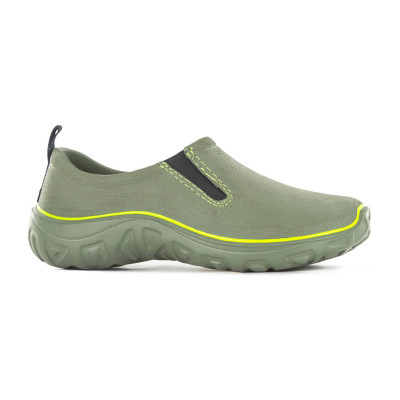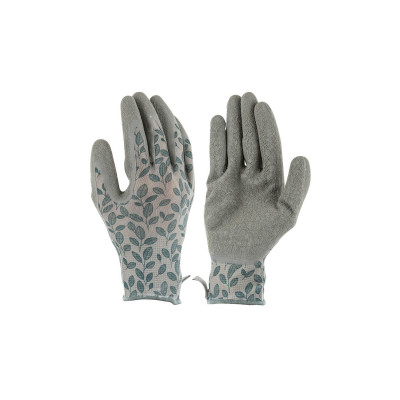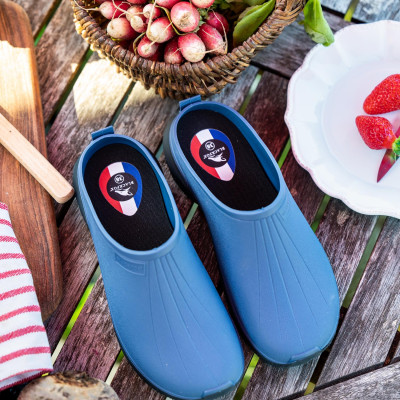Caring for Your Hands in the Garden: Why the Right Gear Makes All the Difference
Whether you're a casual gardener or a seasoned professional, a good pair of hand protection gear is much more than just an accessory. It’s essential personal protective equipment that ensures your comfort and keeps your hands safe during all your outdoor activities — as well as for certain DIY or cleaning tasks. The right gloves protect you from cuts, scratches, insect bites, or thorns (especially rose bushes), dirt, and contact with potentially irritating substances. Discover our tips to choose the right gear, use it properly, and take care of it to keep your hands protected in the long run.
How to Choose the Right Gear for Gardening?
Taking care of your hands is essential. The right gear depends on how you plan to use it and the level of protection you need. Here are the key criteria to help you find the most suitable options for your needs:
1. The Material: A Key Factor for Comfort and Durability
The material used in this gear directly affects its flexibility, durability, and overall comfort. At Blackfox, we focus on high-performance synthetic materials and natural rubber:
- Latex: Highly flexible and offering a snug “second-skin” feel, latex is ideal for planting or delicate weeding tasks that require precision and dexterity. It is often waterproof and provides good moisture insulation. Be aware, however, that natural latex can cause allergic reactions in some individuals.
- Nitrile: A great alternative to latex, nitrile is hypoallergenic and highly resistant to chemicals and wear. It's an excellent choice for handling certain treatment products or for gardeners with sensitive skin.
- Textiles (Polyester, Polyamide, etc.): Often used as a base layer combined with a coating (see below), these synthetic materials are lightweight, breathable, and quick-drying. Perfect for light maintenance tasks in dry weather.
- Coatings (PU, Nitrile, Latex): Applied to the palm and fingers of a textile base, these coatings enhance grip, waterproofing, and resistance to wear or cuts — depending on the type and thickness used.
2. Which Gear for Which Task?
Depending on the tasks you plan to do, the level of gear required will vary:
- Light tasks (planting, repotting): A thin and flexible protection (textile with a light coating) is enough to keep out soil and prevent minor scratches.
- Pruning (roses, hedges, thorny shrubs): Opt for thick gloves or reinforced models that offer strong resistance against thorn punctures.
- Tool use (spade, pruning shears, brush cutter): Choose gear that resists wear and cuts effectively (check for EN 388 certification if available), and ensures a secure grip for safe handling of tools.
- Handling chemicals: Waterproof gear made of nitrile or rubber is essential.
3. Specific Use: The Right Gear for Every Task
- Kids’ Gloves: There are specific models designed for young gardeners, sized appropriately and offering basic hand protection.
- Cold Weather Gear: Look for items with thermal lining to keep your hands warm.
- Gear for Wet Tasks: Make sure it is fully waterproof (latex, nitrile, rubber, or a waterproof coating).
How to Find the Right Size?
Effective protection starts with a perfectly fitted pair. If the gear is too large, it reduces dexterity and can get in the way when using tools. Too tight, and it becomes uncomfortable and restricts blood circulation.
- The goal: Maximize comfort and precision of movement without compromising hand protection.
- Measuring Your Hand: Use a flexible measuring tape to measure the circumference of your palm (excluding the thumb). Then refer to our size guide to find the right match (usually from size 6 to 11). Don’t hesitate to check the specific sizing charts for each model.
When Should You Replace Your Gear?
This gear is subject to wear. Inspect it regularly:
- Signs of wear: Holes, tears, thinning material, frayed seams, loss of elasticity, damaged lining, excessive stiffness due to poor maintenance, and loss of waterproofing.
- Increased risks: Worn-out gear no longer provides the original protection against cuts, wear, or punctures (like thorns).
- Contamination: If you handle chemicals, replace your gear as soon as it shows visible damage or if you suspect persistent contamination.
Don’t wait for an accident — replace your pair at the first signs of significant wear.
How to Care for Your Gear to Extend Its Lifespan?
Regular care, tailored to the material, helps maintain their properties for longer. And the good news is – it’s pretty easy:
- After each use: Shake off or brush your gear to remove soil and debris.
- Cleaning:
° Latex, nitrile, rubber: Rinse with lukewarm clear water, optionally using mild soap. Dry thoroughly in open air — inside and out — away from direct sunlight, which can damage these materials.
° Textiles / synthetics: Follow the manufacturer's instructions. Some types can be hand-washed or machine-washed at low temperatures. Air dry only.
- Storage: Keep your gear in a dry place, away from direct sunlight.
Check out our care tips for each material type to get more detailed information.
Which Gear Should You Choose for DIY Projects?
For your DIY tasks, assess the potential hazards:
- Handling sharp tools: Choose cut-resistant gloves (certified to EN 388 with a good cut protection level).
- Heavy-duty work, handling raw materials (wood, stone): Go for sturdy gear with strong resistance to wear and splinters.
- Painting, handling chemicals: Waterproof protection in nitrile or latex is recommended.
- Outdoor activities in winter: Our Isoplus gloves, made of latex and synthetic polyester with a thermal lining, provide effective protection against the cold.
Choose the right gear for the task to give your hands the best possible protection.
Why Use Protection for Cleaning Tasks?
Repeated exposure to cleaning products, even common ones, can irritate or damage the skin.
- Chemical barrier: It’s essential to wear waterproof cleaning gear, typically made of latex, rubber, or nitrile, to protect against detergents, solvents, and other potentially corrosive substances.
- Coverage and fit: Our Decap gloves, made from natural rubber, are sturdy and provide extended coverage for hands and forearms — ideal for heavy-duty indoor and outdoor cleaning tasks (such as stripping, painting, etc.).
Conclusion: Hand Care — A Priority for All Your Activities
You’ve got it — wearing the right protection for your outdoor or cleaning activities isn’t optional, it’s essential. It’s about taking care of your hands against a wide range of risks (cuts, thorns, chemicals, wear), ensuring your comfort, and protecting your overall health.
Explore our full range of gardening gear and protective equipment on Blackfox today. You'll find a wide selection of styles, materials, and sizes to suit every need and every budget. Find your perfect pair and enjoy fast delivery — so you can garden and tackle DIY projects with total peace of mind!







